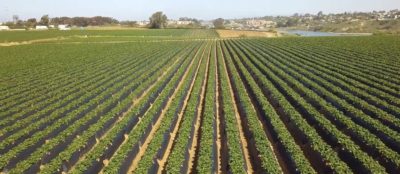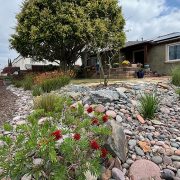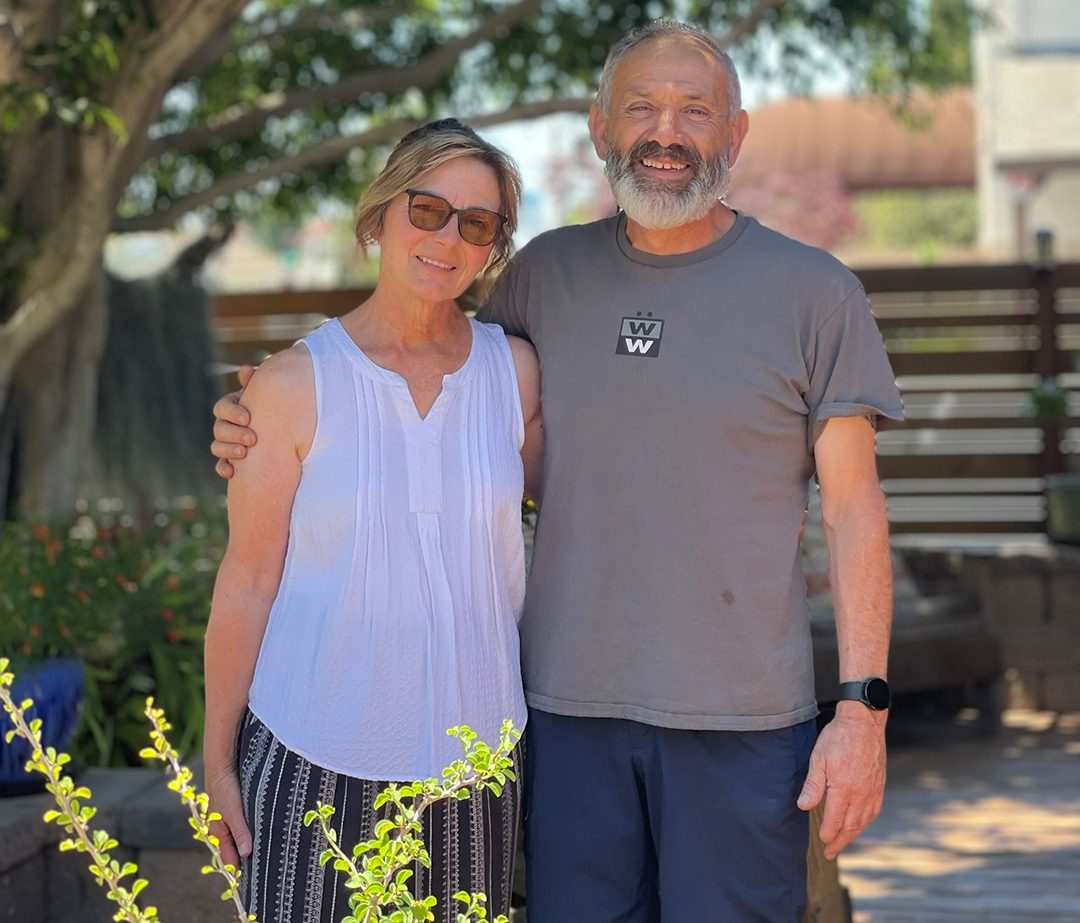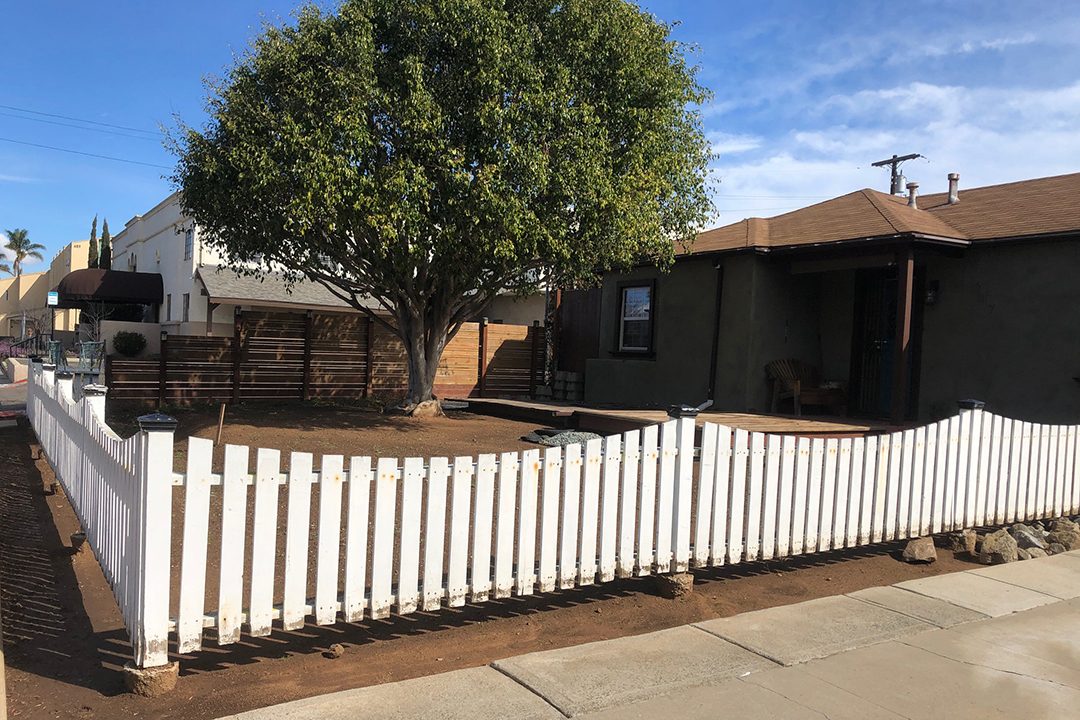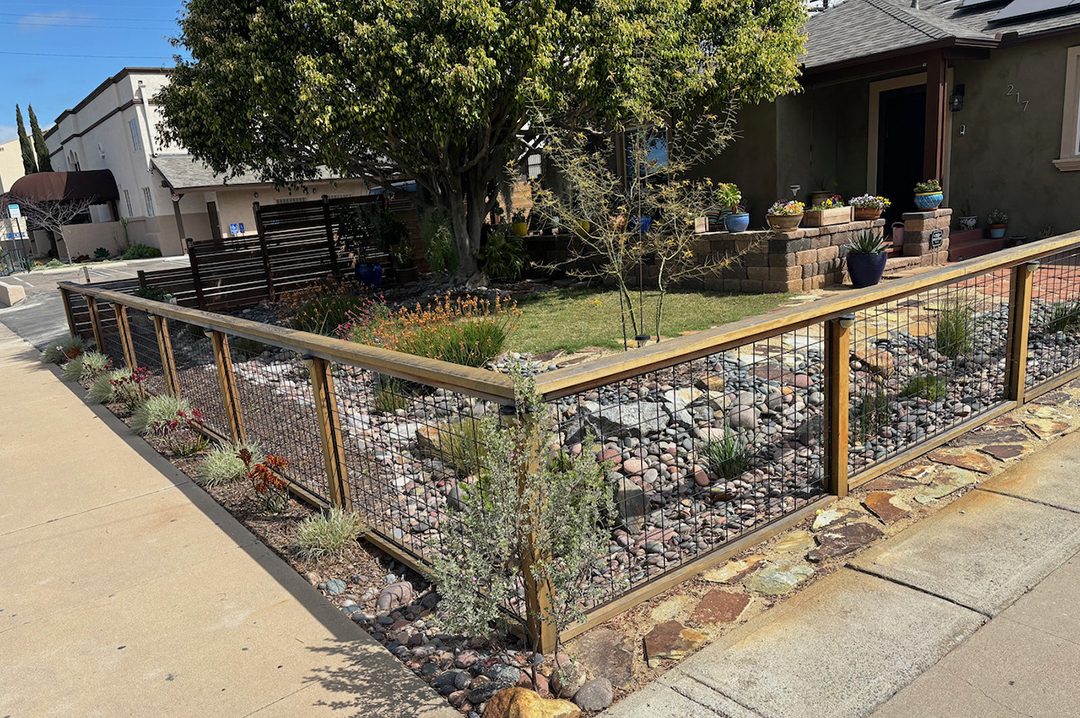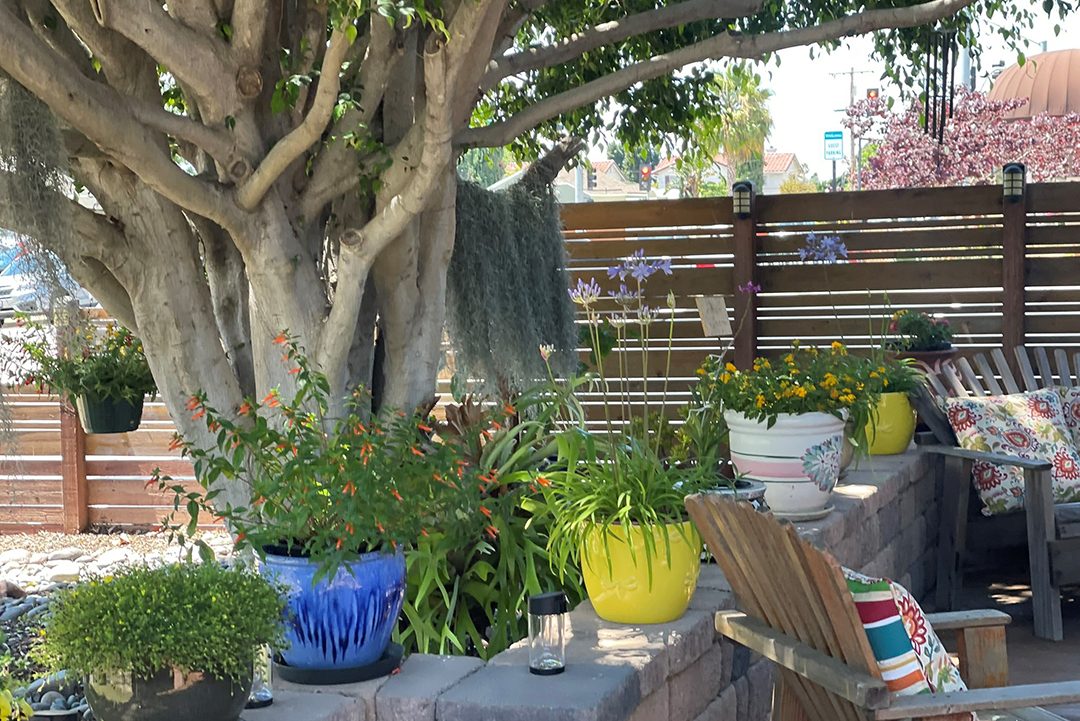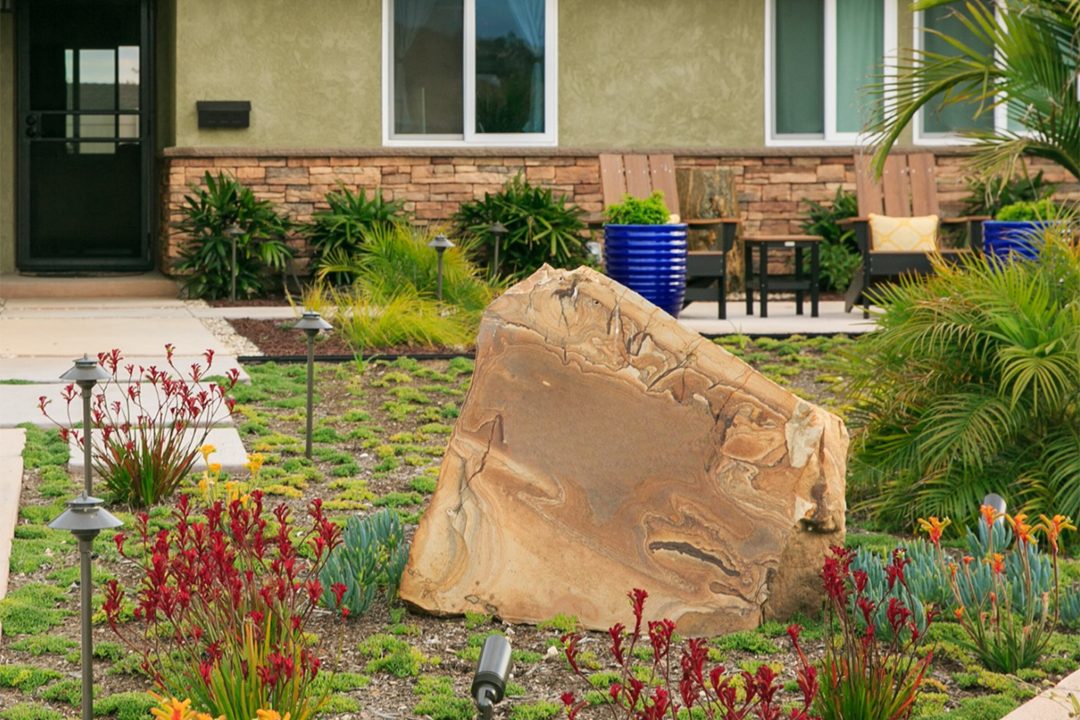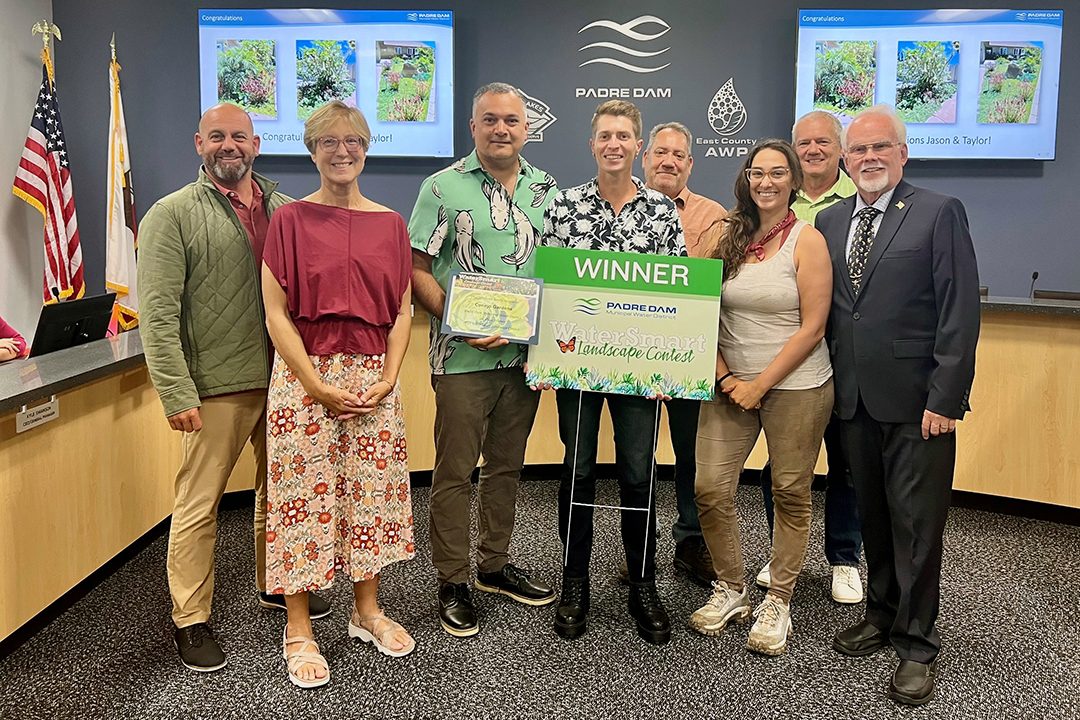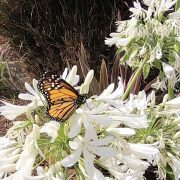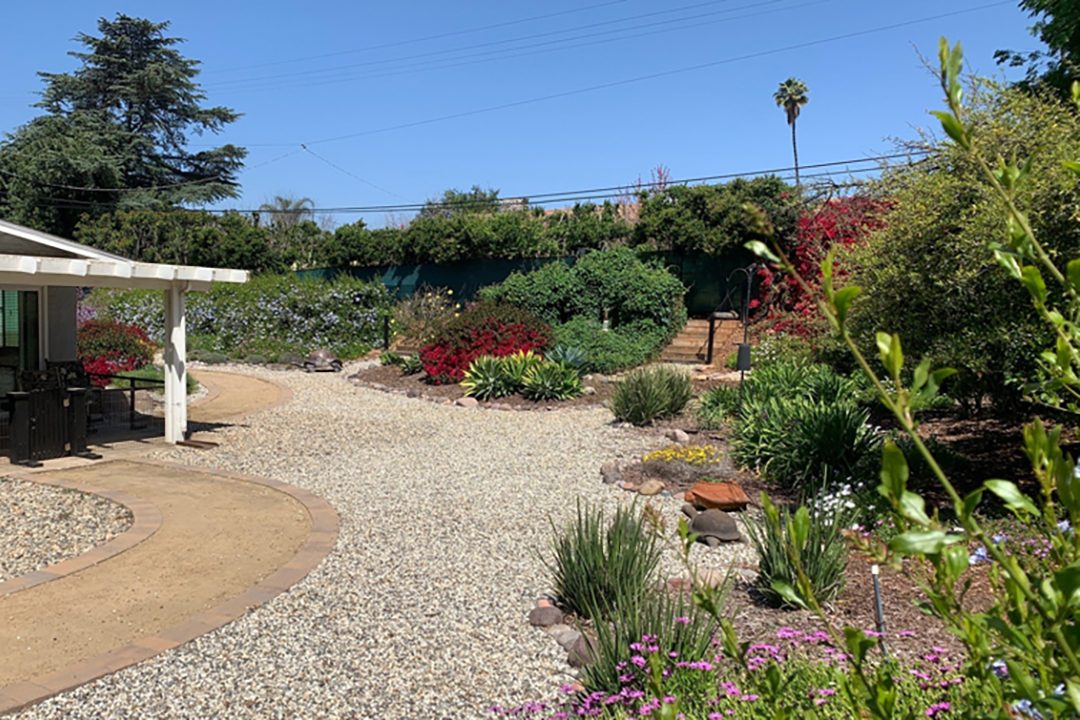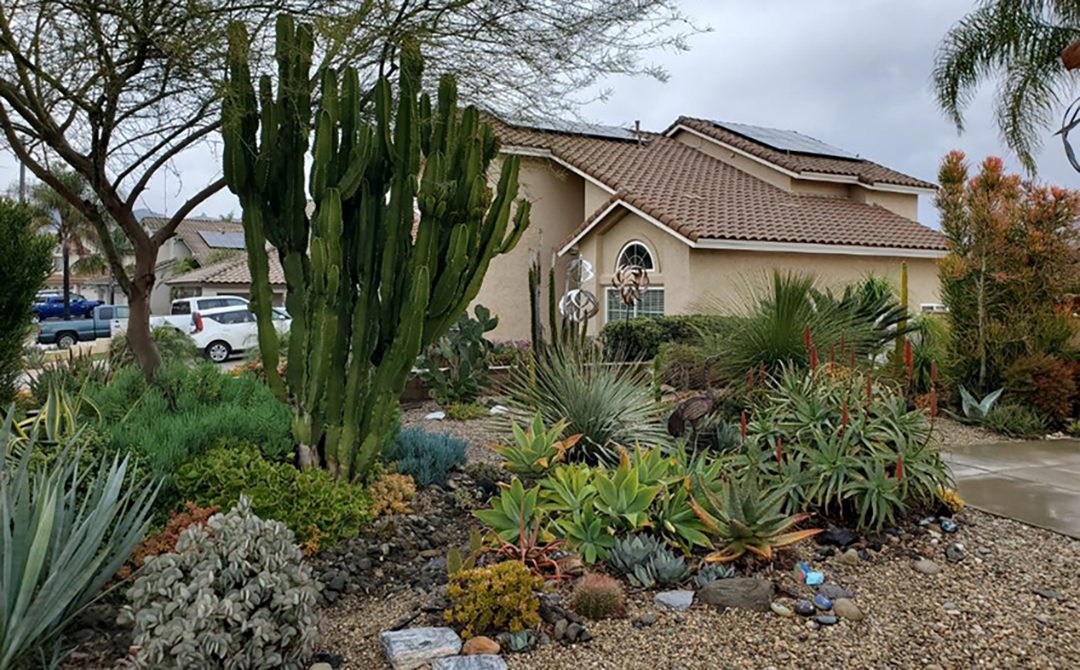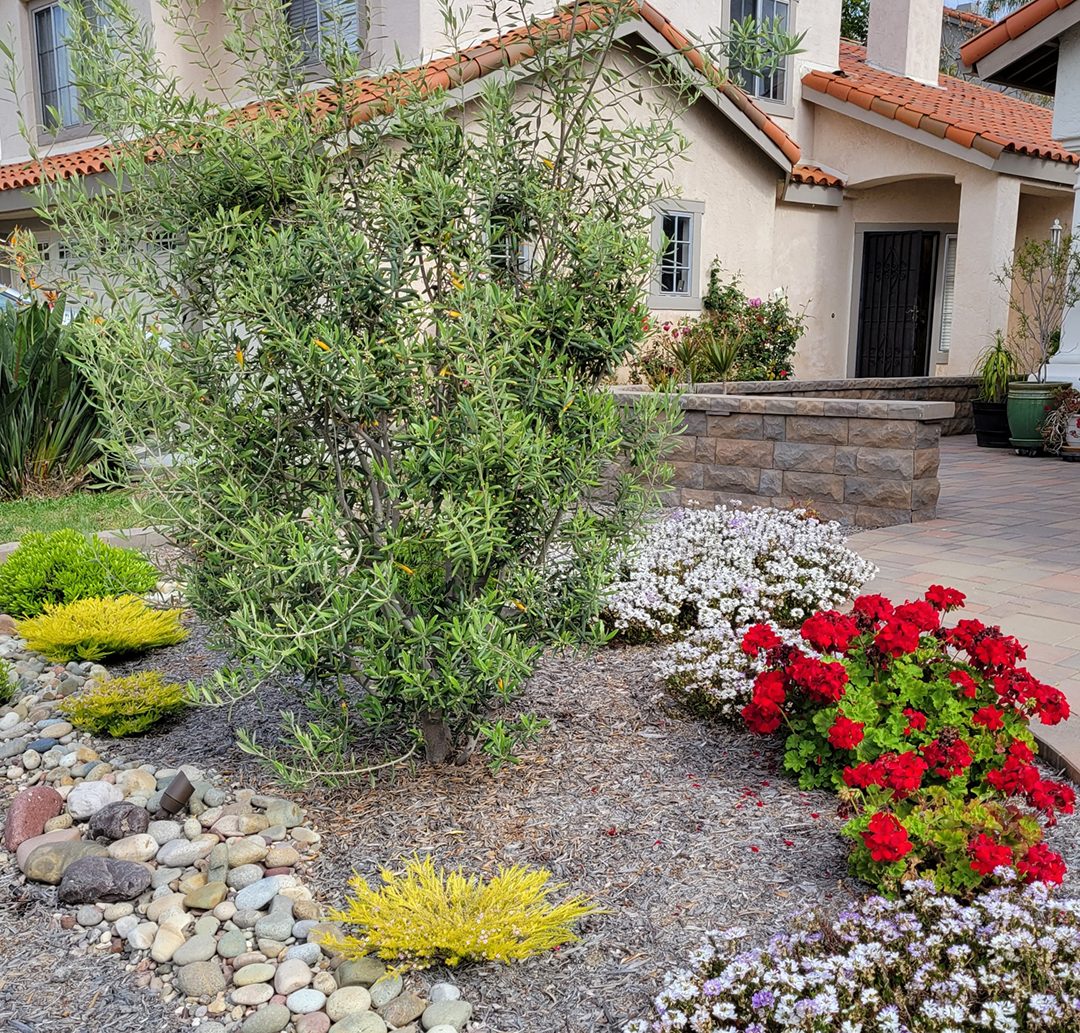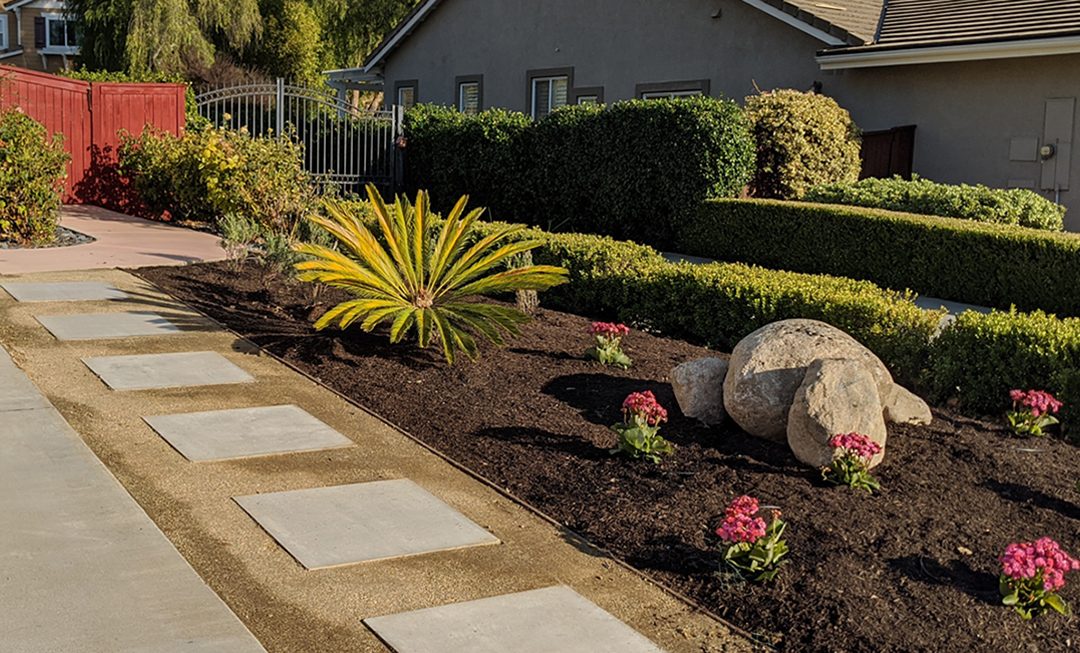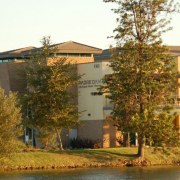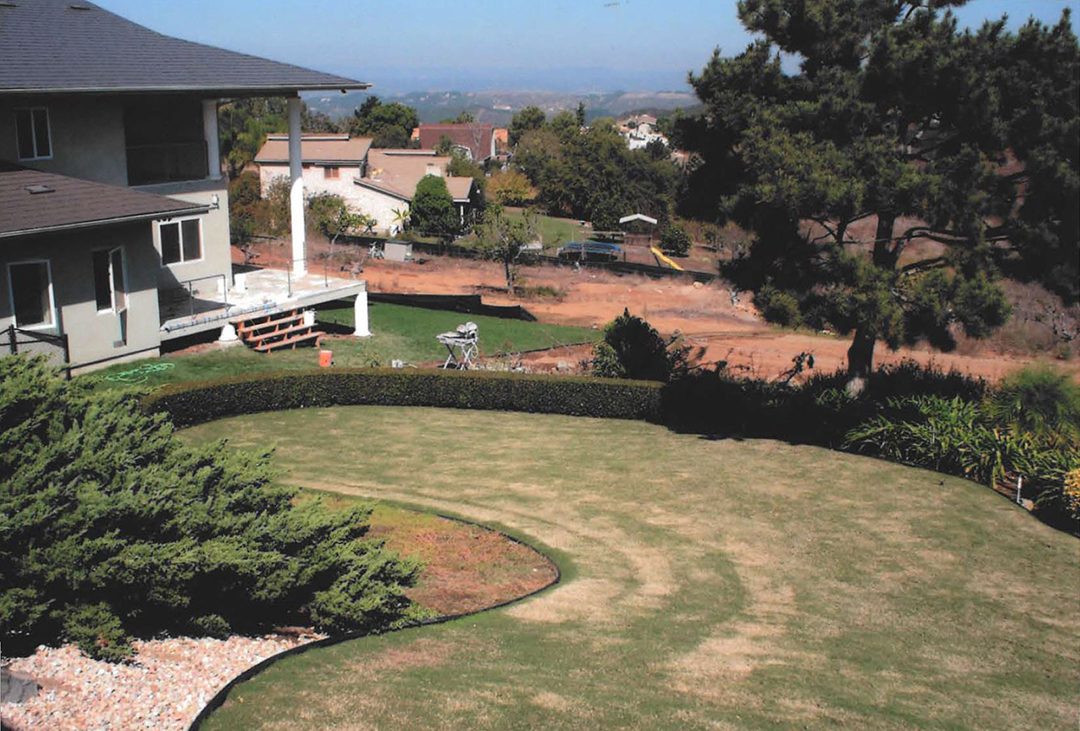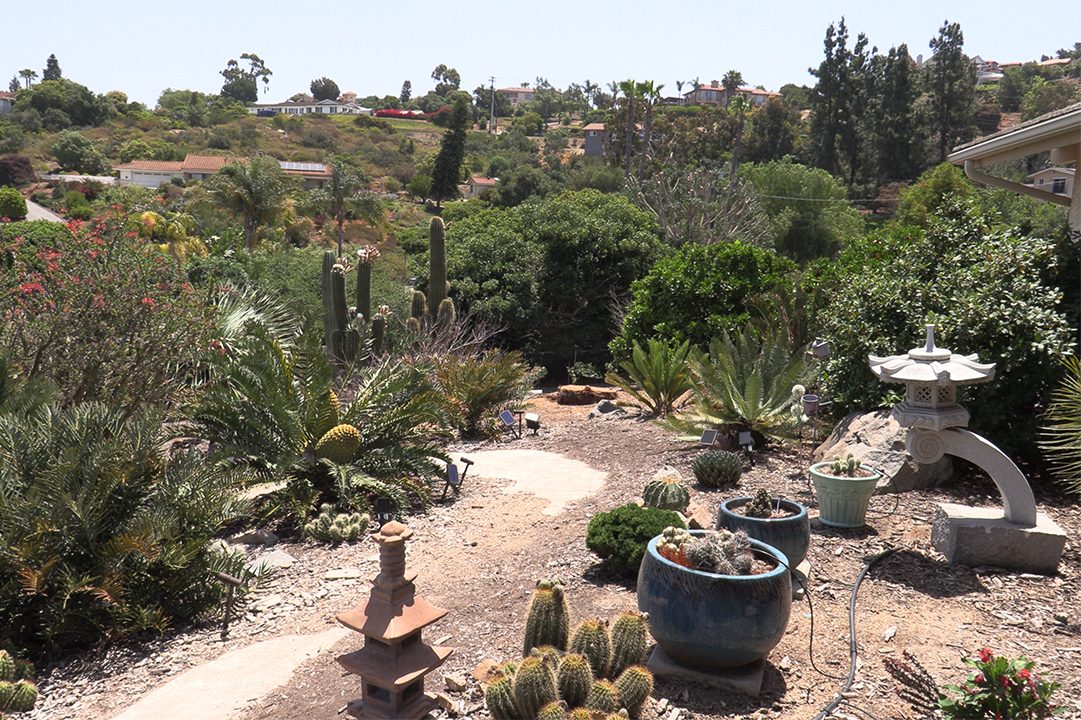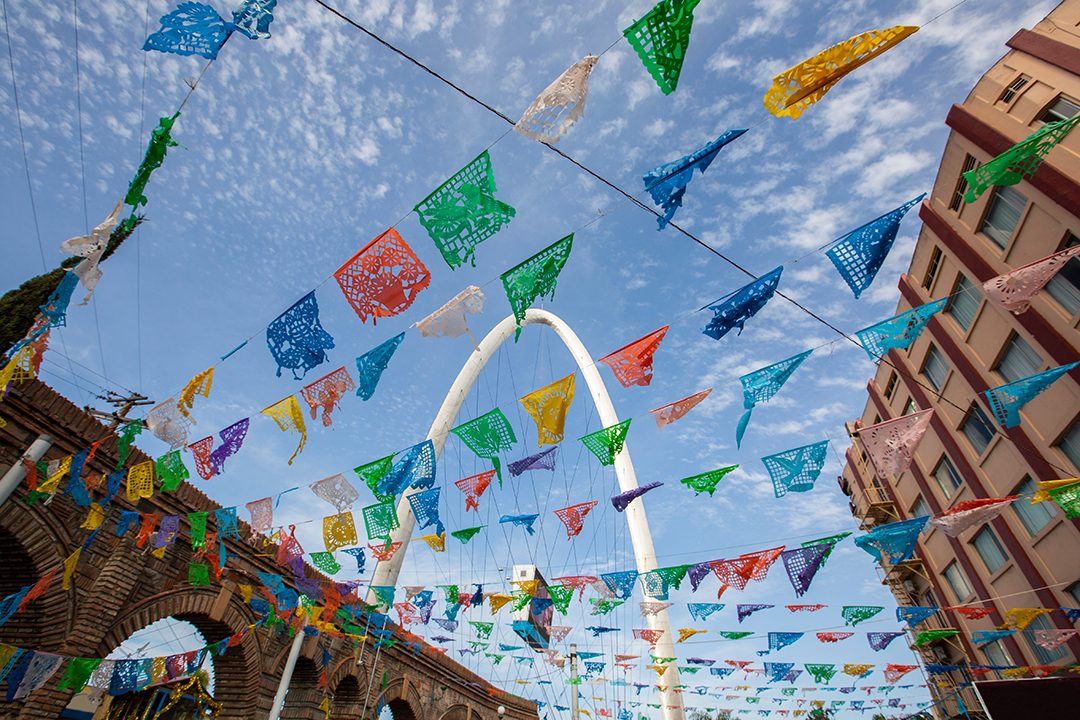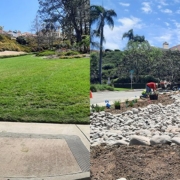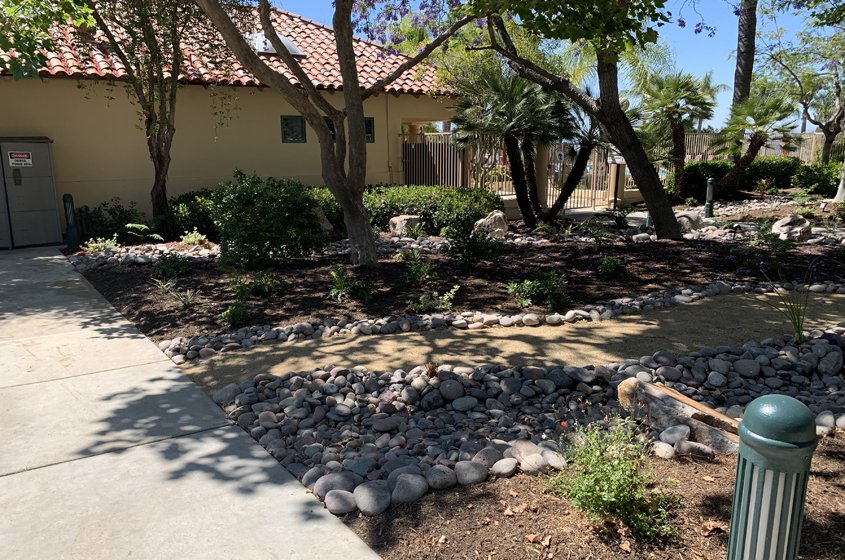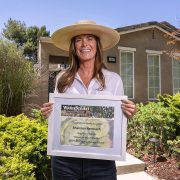Chula Vista resident Shannon Nembach’s Italian-inspired landscaping proves that a waterwise landscape doesn’t need to be restricted to gravel and cacti. Neimbach’s makeover received the “Best In District” first-place award in the Otay Water District’s WaterSmart Landscape Contest.
Her garden is in the Otay Water District’s division 4, represented by Board President Jose Lopez.
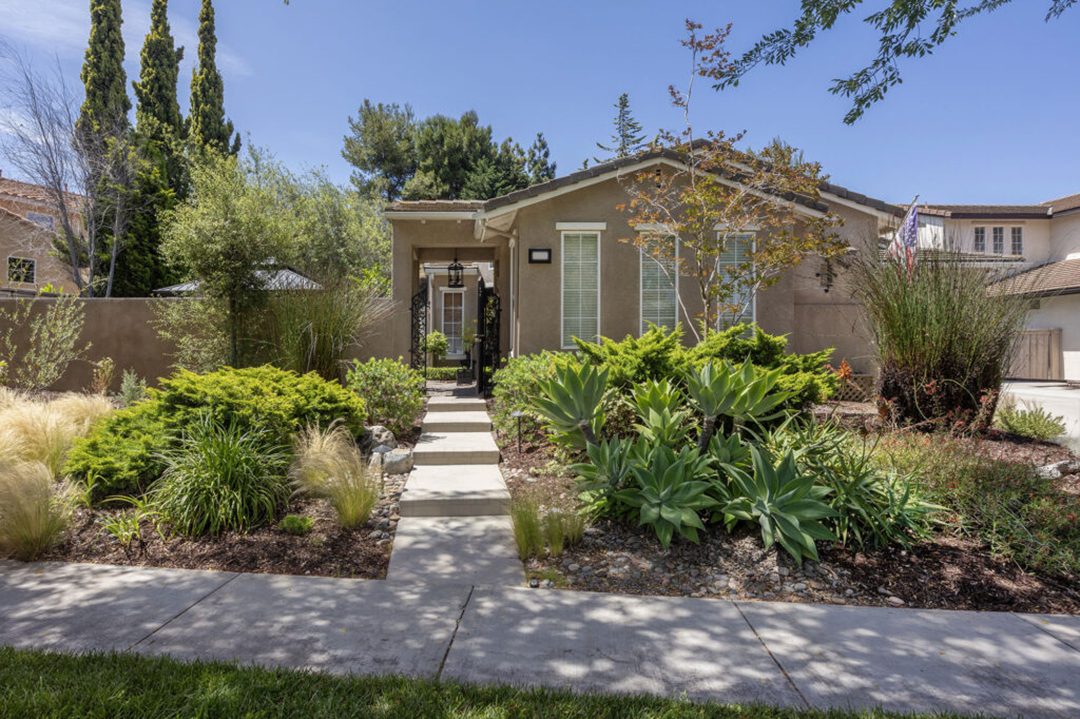
Shannon Nembach put in 22 years of work and education to get her winning results. Photo: Otay Water District
“Otay Water District is proud to recognize Shannon Nembach for demonstrating a true commitment to outdoor water-use efficiency for more than two decades,” said Lopez. “Her efforts will continue to pay off as our region continues to transition into making WaterSmart landscaping a way of life.”
The District recognized Nembach at its August board meeting, awarding her a certificate of recognition, a gift certificate to a local nursery of her choice, a yard sign, and other promotional items.

A look at the backyard before its makeover. Photo: Otay Water District
Italian Style Inspiration
Nembach transformed her outdoor space into a lush garden with pea-gravel walkways, an inviting outdoor dining area, and low-water-use features that attract native wildlife to her Chula Vista home.
Nembach purchased the home new in 2002. There was no original landscaping, so she took advantage of the opportunity to build a beautiful, functional garden that could withstand climate change and periods of drought, inspired by her trips to Italy.
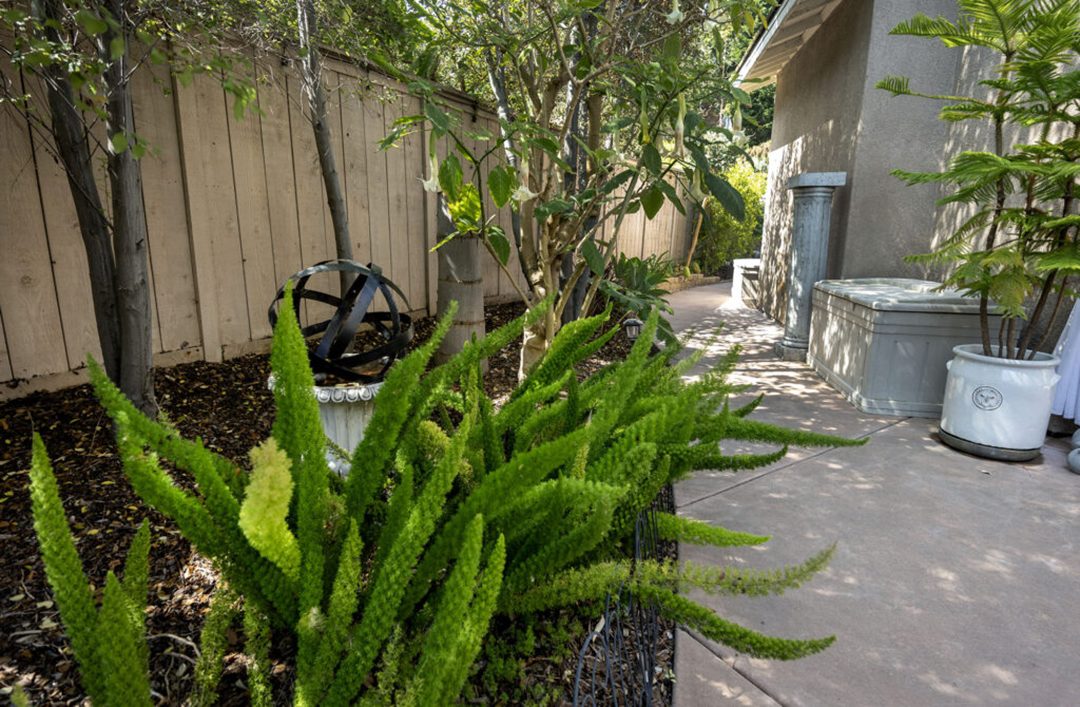
Shannon Nembach first began working on her side yard. Photo: Otay Water District
Over the past 22 years, Nembach says she used a self-directed learning approach to tailor her landscaping design efforts to her family’s specific needs and preferences. She began by expanding her side yard to part of the front to make room for a courtyard. She hired a contractor to install a retaining wall and concrete patio with an entry gate and outdoor fireplace.
The well-maintained front yard features a small riverbed and bright green water-wise plants that bloom throughout. Past the entry gate, a large canopy wraps around a long dining table near the fireplace where she regularly hosts outdoor family dinners.
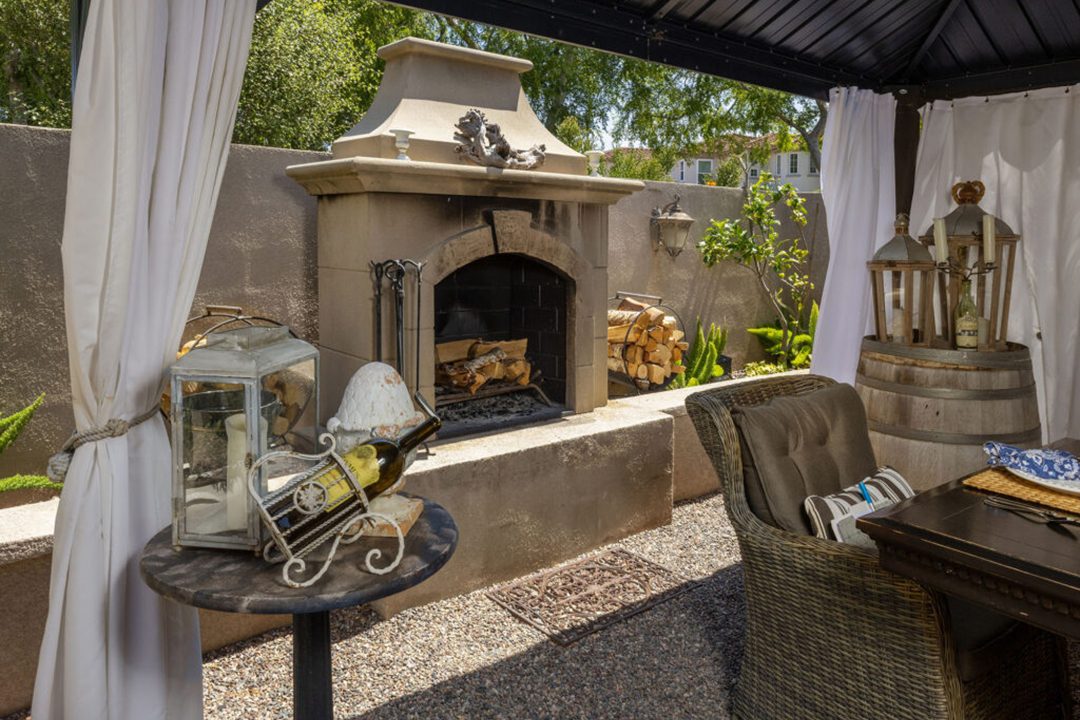
The family enjoys outdoor entertaining with seating near a fireplace. Photo: Otay Water District
“I particularly enjoy the way our WaterSmart yard attracts native wildlife, creating a vibrant and dynamic ecosystem,” said Nembach. “It also provides a perfect setting for entertaining family and friends, offering a beautiful and serene backdrop for gatherings and outdoor activities.”
The backyard once included a small patch of grass for her children to play in when they were younger.
Today, raised planters near a sitting area replace the grass where Nembach grows vegetables. A cascade waterfall encompasses a sloped hill with a pond at the bottom. Low-water-use shrubs, such as Japanese Boxwood, add color throughout the yard.

Low water use plants add color throughout the landscaping. Photo: Otay Water District
Self-Taught Landscape Design
Nembach is a retired high school teacher who is self-taught in landscape design. She credits her mother, an avid gardener, with teaching her the tips and tricks of gardening. She also gained a wealth of knowledge by spending time in plant nurseries and reading Sunset Magazine and gardening books.

Shannon Nembach says she has never missed not having any grass. Photo: Otay Water District
“We have never used a gardener. My husband and I planted everything except for two trees on our hill, including wheelbarrowing 7.5 yards of pea gravel into the front courtyard to build the free-standing patio and the waterfall and pond in the backyard,” said Nembach. “The pond has provided a constant water source for all the local wildlife for over 20 years.”
“I would recommend others to upgrade their yards. I’ve never missed having grass, which I associate with high maintenance, frequent mowing, fertilizing, weed control, and excessive water use,” she said. “Instead, our drought-tolerant landscape is not only low maintenance, but also beautiful, lush, and inviting. It is practical and attractive.”
Reducing Water Use
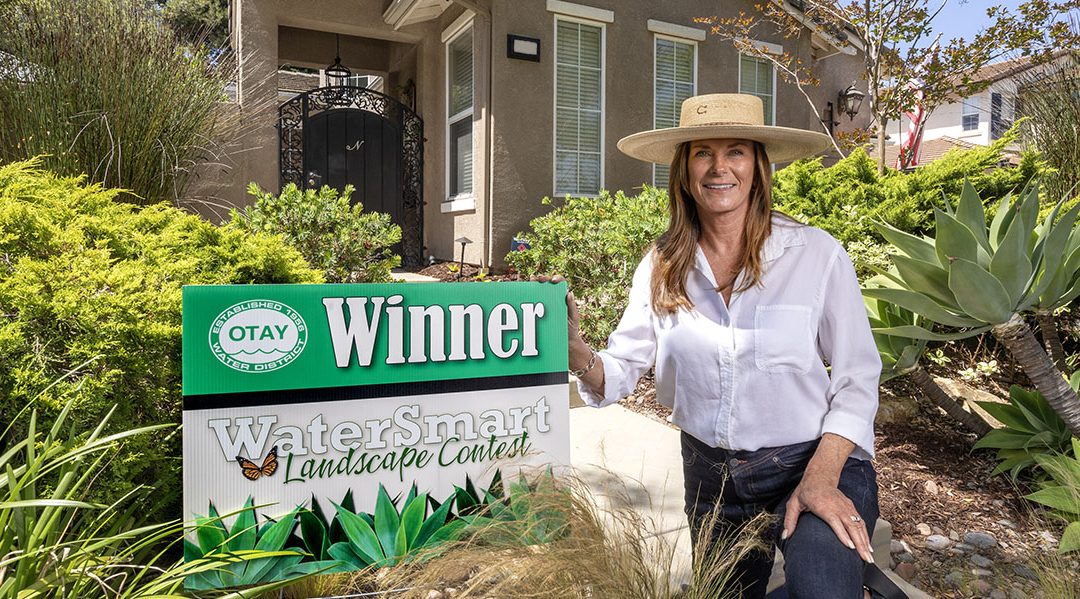
Shannon Nembach recommends homeowners consider waterwise landscape plans of their own. Photo: Otay Water District
Nembach’s requires minimal trimming and weeding. Rainwater provides enough water during winter and spring to leave the irrigation system off. Mulching every year helps retain moisture and keeps the weeds to a minimum.
Her water-saving installations have contributed to a 42% decrease in the family’s total water usage when comparing the initial 11-year period in their household to the subsequent 11 years.
“Using water wisely has always been important to me, especially after hearing in the nineties that California’s water consumption was unsustainable,” said Nembach. “When we moved into our home in 2002, I was determined to create a landscape that could endure drought conditions and support long-term water conservation efforts.”
